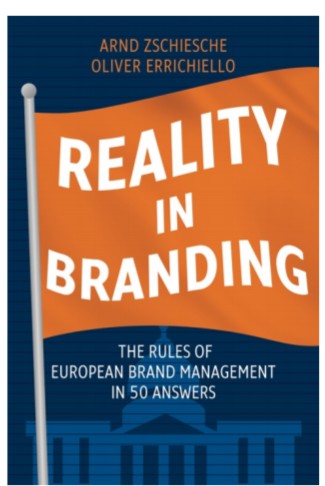By Dr. Arnd Zschiesche and Prof. Dr. Oliver Errichiello
As the world becomes smaller and faster, it is necessary to adapt to the pace or to go your own way because speed and a cosmopolitan universality are, at the very least, only two possible fundamentals for individual business success. Speed is a strategy that has emerged in markets that operate in the here and now – a strategy whose success is never measured in “yesterday. “Most companies have followed this market “directive” at some point. It’s not for nothing that one regularly hears “The market dictates it” as a response to critical questions about current strategy. The market demands it from us. Maybe markets are able to do some things, but they are certainly not capable of presenting any demands to companies. European companies are often characterized by a very different understanding of market enforcement and market relevance: their strength lies in the fact that people trust them –and have often done so for generations. Their attitude is not a charming feel-good “soft emotion”, but the decisive “hardfact” that works to reduce one’s own efforts to find a good solution.
Those who already trust you no longer need to be convinced! On the contrary, all the work of “convincing” is extremely expensive. With their comparatively high social and ecological standards, European companies –especially the medium-sized companies, with many hidden champions among them –can never win against often nameless but very fast-moving companies from Asia or the USA. They require more time to assess, optimize and safeguard their “good name.” They invest in concrete future scenarios –they do not fantasize or extrapolate. Their parameters are quality, a focus on the long-term, trust or –in short –brand strength. Against this backdrop, European companies cannot and must not allow themselves to be measured at the same level in terms of their claim and appearance, or to use similar instruments or strategies that are part of the common repertoire of speed-driven Asian and U.S. companies –they will inevitably fall behind.
In addition, many of these “fast-moving companies” have yet to prove whether their business models are sustainable over time (in some cases, this is not even the goal), or whether the “current big thing” will fizzle out after its wild heydays in the fast lane of expansion. Zeitgeist against trust Classic European brand management is different –whether in Germany, Austria, France, Italy, Spain or the Scandinavian countries. It is not better or worse in principle. It is different in terms of its objectives. And it has a more solid foundation: its strength unfolds over time, during which –contrary to all contemporary zeitgeist –it specifically addresses habitual patterns and, as a result, consistently establishes trust.
Trust cannot be decreed. It grows slowly and steadily. It offers orientation and reassurance –especially, and above all, in uncertain times. Ergo: it is economically viable and uniquely efficient. Goods have always been more than a means to an end for people. Goods have always been valued for more than their pure utility. They’ve always been surrounded by a status greater than their pure utility. They tell us about their performance, their history and a specific culture they originated from. The resulting style and performance of a branded product is always distinctive and non-interchangeable. The following holds true: the more unique the style, the stronger the social appeal of the brand behind it. And this is not only true for premium or luxury products –it works for all products at all levels.
Brands are stable ambassadors in a fast-changing world. In a world that seems to become more and more homogeneous, brands give us access to the special qualities of past generations and fantastical places. A brand’s performance is always linked to an origin because we connect them with regions or people in certain countries, cities or areas. It is no coincidence that the first trade routes bear the names of specific products: the Silk Road, the Incense Road, the Amber Road. The reason for this diversity is a regional history that materializes in individual goods and services. The more globalization and digitalization there is, the more important the location of origin becomes. This often enriches our personal life and activities: When we buy goods, we always reveal a little bit about what is important to us, how we want to be seen, how we interpret the world. This may be in the form of wine from a specific growing region, a sweater made of Shetland wool, a socially fair mobile phone –even the rejection of visible brand logos or exclusive brands is itself a brand statement. Strong brands are ambassadors –they communicate about themselves and, therefore, also about us. Good names –not an old fashioned business model.
Europe is considered to be the museum of the world. It is a continent of traditions, customs and rituals: no other continent in the course of its history has produced more types of merchandise that still exist today and that evoke overarching images and attributions on a global scale. This is possible due to the fact that a product has always been produced in a similar way –experience creates expectation. This expectation was not sporadic and situational. Instead, it developed into an attitude, a set of expectations that simply “held on,” provided guidance and created the possibility of belonging to a community of like-minded people. This ingrained knowledge of the specifics of a “good name” is the actual driver that explains the value of a brand today. In the digital communication thunderstorm of modern times –with its infinite signals, channels and actors –a strong brand with a clear signal is a beacon in the market.
Europe, as a continent of peculiarities, caused European economic experts and brand practitioners to systematically deal with the “brand” phenomenon at an early stage. It was not until the 1950s that the American view increasingly shaped marketing. The reason for this was the pace-setting importance of the USA for the global economy. It was assumed that, once demand in the mass markets was generally satisfied, the only way to ensure rapid growth would be to address customers as individually as possible. The idea of the “target group” was born, to which a company has to adapt adequately. This resulted in fundamental consequences: market research and big data tracking, as well as an orientation towards quick results, characterize today’s marketing. Instead of lengthy development paths and trust-building, marketing of this type is oriented towards a quick launch –optimization is carried out in the form of “work in progress.”
Countless product recalls prove it. Startup strategies are costly and short-orientated. Typical startup exit strategies are designed to bring a business idea to the mass market as quickly as possible, and then to scale it and roll it out. U.S.-style marketing is characterized by this tendency towards pragmatism and speed. This form of selling is also an important prerequisite, especially in the area of fast-moving consumer goods. However, it costs an incredible amount of money if continuity is not partially ensured. People must be won over again and again for a (new) product. How many U.S. brands have managed to survive using this methodology over decades –perhaps centuries?
Famous brands such as Apple or Harley Davidson were developed very differently than “typical” U.S. brands. Today, in contrast to the 1950s to 1970s, both analog and digital channels are overflowing. Today, everyone uses similar market research instruments to analyze similar customers, target groups and personas, and they usually draw the same conclusions (also due to similar training at similar universities). The result is total interchangeability, which alone should lead to ever higher communications expenditures to gain attention.
Time for value-added-concepts.
The reason for being and, thus, the value of every brand lies in fulfilling expectations. To occupy the collective memory space in people’s minds (Mercedes is a luxury vehicle, but Tesla dominates the collective mind on EV)–in such a way that the effort to persuade decreases, the value proposition increases and the transaction costs are reduced year upon year. This can only succeed if the objectives of a company and its brand are of a long-term nature. It is imperative to critically question the thoughtless transfer of global success models to mature business and success structures –for the benefit of a sustainable economy and all the people involved. People who tread along new –proven –paths and who focus on the “long-term” and prefer trust over nebulous short-term successes. Because “trust” is and remains the sole reason for the existence of –and the onl yrelevant emotion for –any brand. It’s time to take an example from “good old Europe.”

Dr. ARND ZSCHIESCHE (left) and Prof. Dr. OLIVER ERRICHIELLO (right) are experts for value-adding brand positioning and brand management in Europe. They lecture at the University of Hamburg, Germany and the University of Applied Studies in Lucerne, Switzerland and run their own consultancy. They have published more than 15 books in german. Their clients include numerous renowned companies, ranging from small and medium-sized enterprises to large international corporations. As keynote speakers, they fight against the senseless elimination of marketing and advertising budgets and for the “serious” handling of brands. Their new book: In 50 timeless answers, brand sociologists Dr. Arnd Zschiesche and Prof. Dr. Oliver Errichiello put a stop to the brand debates that are shaped by the zeitgeist. They speak in plain language where vague chatter typically prevails. And they show why every brand is a social phenomenon that has an impact: It’s about the management of social “hard facts.” Not just in Europe. Classic European Brand Management leads the way for every company seriously focusing on economic success for the long term –internally, as well. It’s time for timeless, value-oriented Branding from the old continent. Available as paperback and Ebook through local book shops and amazon.com.







Comment
No comments found.